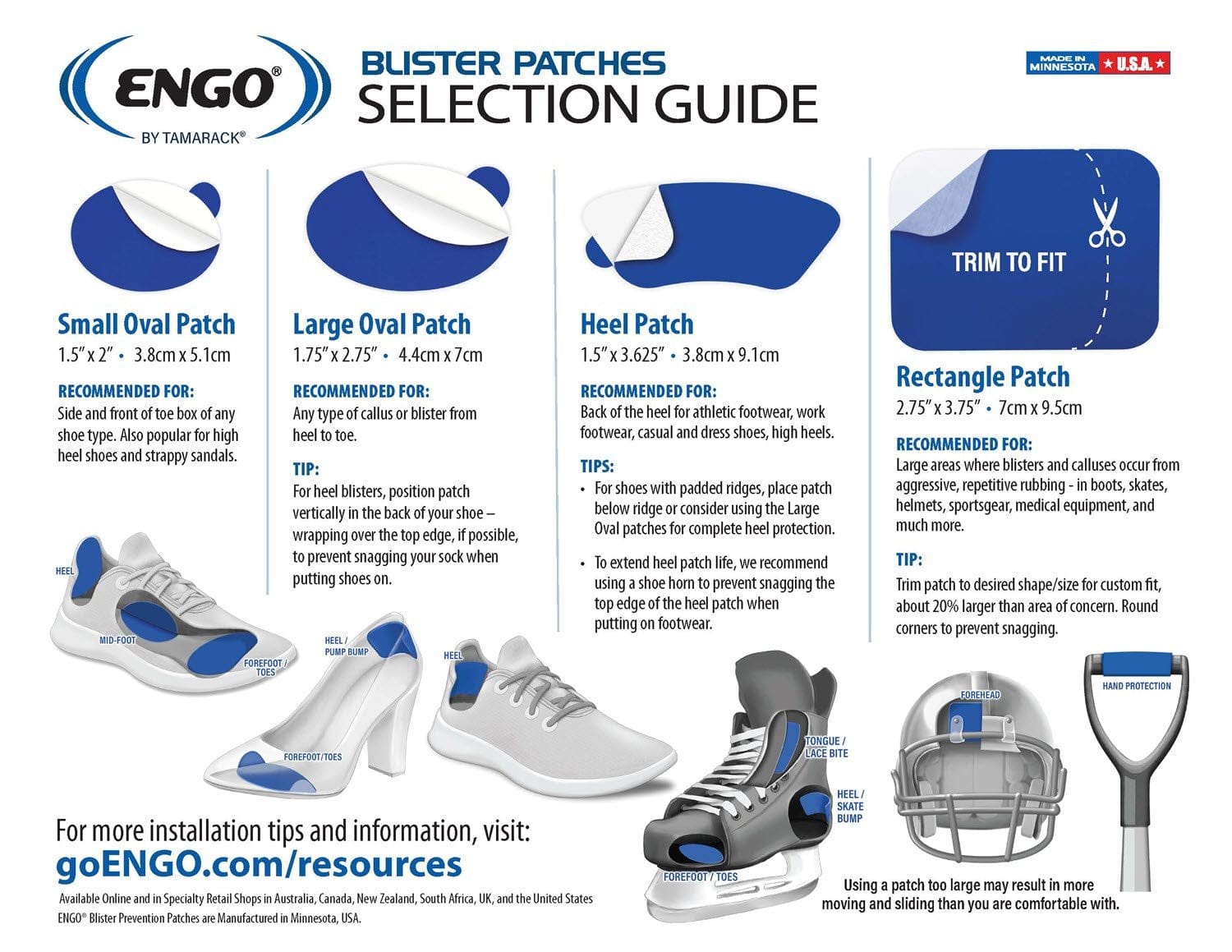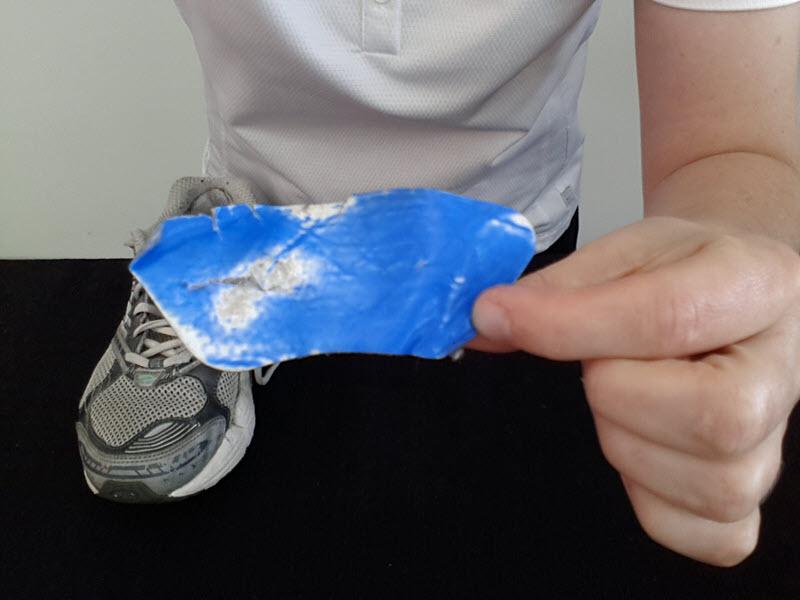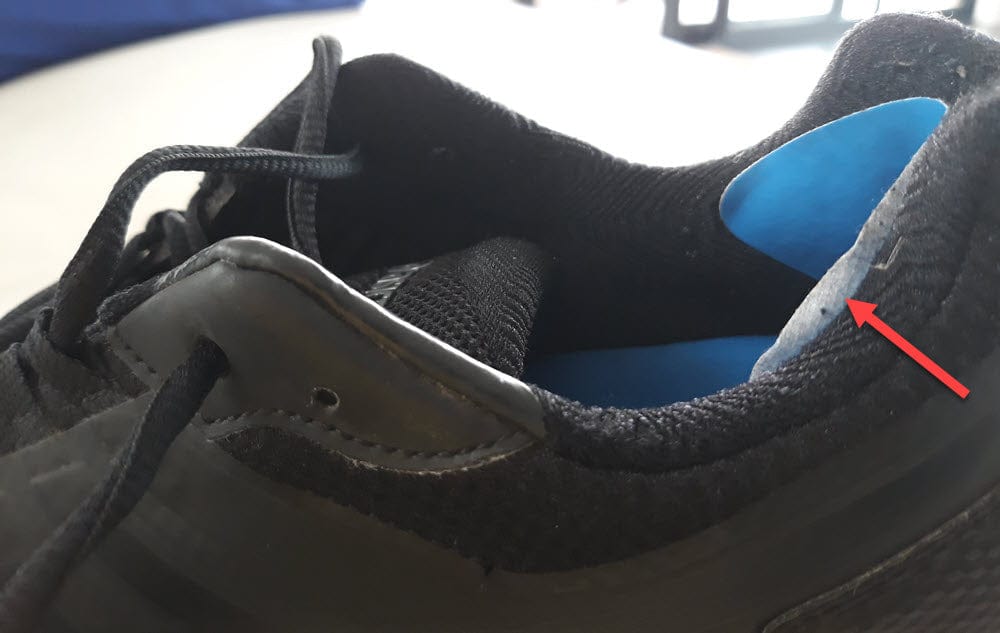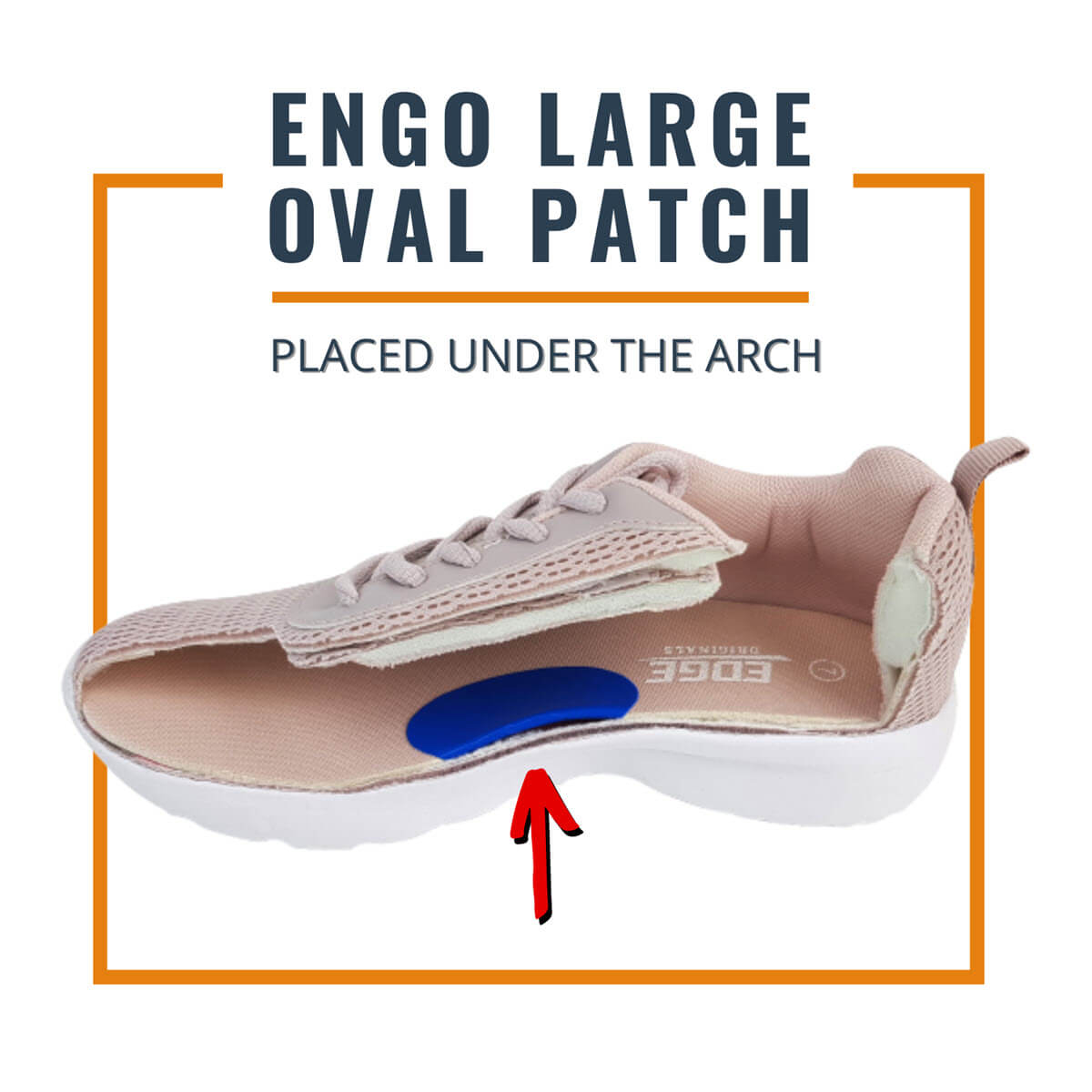Talk about a different way to approach blister management! You apply ENGO Blister Patches to your shoe instead of your foot! It's a bit of a change around comparing it to other friction management strategies. Obviously, lubricants, powders, wool, tape, moisture-management strategies all go directly on your skin.
Apply ENGO Blister Patches to shoes, insoles and orthotics
I’ve seen more than one person with ENGO patches stuck to their feet, like a piece of tape. So, please don’t feel silly if you’re not quite sure about how to use these patches. This article will guide you through patch application techniques and answer all of your questions. What's more, there’s a case study at the end.
ENGO Blister Patch shapes
ENGO patches are available in 4 sizes / shapes:
- Large oval: 4.4 x 7cm (1¾ x 2¾ in)
- Small oval: 3.8 x 5.1cm (1½ x 2 in)
- Heel: 3.8 x 9.1cm (1½ x 3⅝ in)
- Rectangle: 7 x 9.5cm (2¾ x 3¾ in)
Ovals are the most versatile patch shape. Mostly because they are the easiest to apply to every part of your shoe, insole and orthotic without creases and folds.

ENGO Patches Selection Guide
Where to buy ENGO Blister Patches
You can grab your ENGO Patches from our online store by clicking the links below.
Cut to any size
You can trim ENGO Patches to any size or shape you desire. Keep in mind, the patch needs to extend 1-2cm further on each side of the blister area to ensure adequate coverage, so you don’t usually have to trim the patch – just select the correct patch shape/size. Two common examples where cutting the patch is advised includes:
- When you apply ENGO Blister Patches to an insole or orthotic, trimming off the overhang (if you’d rather not fold it underneath).
- When using rectangle patches to cover the back of the heel in skates and hiking boots, rounding the corners a little more to make them more like a really big oval.This will make it easier to apply the patch without creases and folds in this deep, very padded and contoured part of the shoe.
Apply ENGO Blister Patches to a clean and dry surface
Like most adhesive products, ENGO patches need a clean and perfectly dry surface to attach to.
- Clean – It’s important to give the area of your shoe, insole or orthotic a little rub with a towel (or similar) to remove:
- Remnants from the manufacturing process (chemicals, fibres, dust).
- Debris from previous use (powders, lubricants, sock fibres, material pill, sweat, dirt, grime), obviously.
- Rubbing with a towel will also ever-so-slightly rough-up the surface to receive the adhesive of the patch.
- Dry – ENGO patches simply will not stick if your shoe is wet or even damp. They may adhere immediately after use if there is low-grade humidity in the shoe, but not "wettness". However, the strongest possible initial adhesion, which is so important to longevity, is achieved when the surface is bone dry.
Make sure your hands are clean and dry too before handling your patches.
Peel, stick and press
To apply a patch, simply peel the backing off, stick it into position and press firmly to secure. It’s extremely important to maintain pressure for 30 seconds to each area of the patch, paying particular attention to the edges. Without this 30-second continued pressure, maximum adhesion won’t be achieved. As you maintain pressure with your fingers, warmth will be transferred through the patch to the adhesive, making it tackier – a good thing for strong adhesion. Again, this is so important for maximum adhesion to the edges of the entire patch.
Immediately wear for 30 minutes
The very next thing you need to do is put your shoes on and leave them on for 30 minutes. Stand and walk around the house with them. We’re looking to maximise adhesion of the middle of the patch by providing functional pressure and warmth to the adhesive.
Watch the edges!
When you put your shoes on for the above 30 minutes process, and on the next few occasions, be very sure your foot doesn’t snag the top edges of the patch. This is particularly important for patches at the back of the heel. Use your fingertips to cover the top edge and corners of the patch to help glide your heel into the shoe – a bit like a shoehorn. That way, your sock won’t drag the patch down.
Normal wear and tear
It is common for the edge of your patches to loosen a little over time. This is especially so for heel patches. The reason is, over the weeks and months, we usually take a little less care pushing our foot into our shoe. Remember, undo your laces every time, and hold the top of your heel patches as your foot goes in.
With normal wear and tear, you’ll find 90% of the patch has remained adhered to your shoe, insole or orthotic just fine – it’s just the edges that become a little dog-eared. Rest assured, as long as the loosened corners are sitting flat when your foot is in place, the patch will continue to work perfectly. Or you can simply trim the loose edges off.
Glue
If your patch does loosened significantly or come off entirely (let’s say your shoe gets waterlogged or you put your insole through a washing machine cycle or you couldn’t remove all the Vaseline from your shoe before you applied the patch), you can glue your patch into place. The manufacturers recommend a glue called Shoe Goo.
Worn patches
Replace ENGO patches when either the blue layer wears through to white or when it releases from your footwear. If some of the adhesive remains on the shoe, use the back of the removed patch and dab the remaining adhesive off (like you do with Blu-Tac when you take a poster off the wall). Alternatively, you can apply a new patch over the old one. Be sure to trim any loose edges off before applying the new patch.

An ENGO Patch removed from the shoe because it had worn through to white
ENGO Application technique videos
How to get the most out of every ENGO patch
How to apply ENGO HEEL patches so they last longer
The 2-Patch technique for edge blisters
ENGO Patch application case study
Colin got some ENGO heel patches and was concerned they seemed to be coming off. He sent me two photos, which is always REALLY helpful!
“I have only worn the shoes twice to the gym. No running or excessive exercise only walking. It appears the heel patches have failed to stick properly. While they feel great I'm afraid it won't go too long before they come off. Should I glue them on?” Colin

Colin's heel patch adhesion issue
You can see the closest top edge of the patch is not stuck to the shoe. It has collected a bit of fluff which means it certainly won’t stick down now.
This part of the patch is positioned too high in the shoe. It’s more on the outside of the shoe than the inside. Even if Colin had applied the 30 seconds of continued pressure to the patch with his fingers, and even if he used his fingertips to glide his heel down into the shoe so his sock doesn’t snag the top of the patch, this part of the patch wouldn’t have received the ever-so-important 30 minutes of pressure and body warmth when he wore his shoes around the house. The part of Colin’s shoe where the patch hasn't stuck, wouldn't have had any part of Colin’s foot or ankle touching it to warm it up and maintain pressure.
At this point, Colin has three options:
- Glue this loose edge of the patch down with Shoo Goo.
- Leave the patch as it is and be sure to hold that loose section flat when donning this shoe so the sock doesn’t keep catching it every time.
- Trim the loose part of the patch off because you don't actually need blister protection up here.
Where to buy ENGO Blister Patches
Grab your ENGO Patches from our online store by clicking the link.
Wrapping up
APPLICATION
- ENGO patches can be trimmed to any size or shape.
- Apply patches to clean dry footwear, insole and orthotics.
- To apply, simply peel, stick and press firmly to secure. Maintain pressure for 30 seconds to each area of the patch, paying particular attention to the edges.
- To maximise adhesion, immediately wear shoes for 30 minutes to provide additional pressure and warmth to the adhesive.
CARE
- ENGO Patches are latex-free, sweat-proof and water-resistant.
- Soaps, lubricants and water-logging may result in a shortened product life.
- Replace ENGO patches when the blue layer becomes white or when ENGO releases from your footwear
If you've got any questions about applying your ENGO patches, or wondering what to do if they're not sticking as well as you expected, don't hesitate to get in touch.








